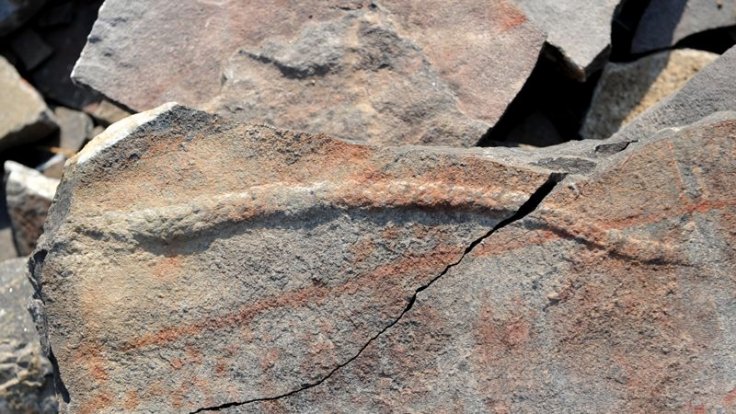
An ancient animal was fossilised between 551 million and 539 million years ago after it died while crossing a muddy seafloor. Finding the fossil of the ancient creature undisturbed, paleontologists believe that it may change the perception of how animals evolved.
The fossil in the Ediacaran period, which is also known as Vendian Period, has challenged the idea that animal life on earth burst onto the scene in an event almost 541 million years ago called the Cambrian explosion, which is believed to be the time when most of the major groups of animals first appear in the fossil record.
A geoscientist at the University of Edinburgh, UK, Rachel Wood said that the new findings are "pushing things further and further back into the Ediacaran," which is an interval of geological time ranging 635 to 541 million years ago.
Simon Darroch, a palaeontologist at Vanderbilt University in Nashville, Tennessee said that it is very rare to find a dead ancient animal preserved at the end of a trail it made when alive and secondly, the fossil dates to a crucial moment in the evolution of animal life.
Darroch addressed the 27 cm long creature as a bizarre-looking organism and said that it was named Yilingia spiciformis.
Shuhai Xiao, a palaeontologist at Virginia Tech in Blacksburg and a co-author of the study, claimed that this creature has an anatomy that is more similar to that of Cambrian animals, despite living up to 12 million years before what is usually considered the start of the Cambrian explosion.
Earlier, palaeontologists struggled to relate the Ediacaran organisms to the creatures of the Cambrian period, as many Ediacaran fossils have strange anatomical features that cannot be seen in modern animals.
But when experts started to debate on this topic and some of the Ediacaran organisms have been recognized as animals, even though they had peculiar anatomy, which indicated that the evolution of animal life happens millions of years before the Cambrian explosion. After the finding of Yilingia spiciformis, palaeontologists started to believe that it has pushed the timeline further.
However, as per the study which was published in Nature, this ancient creature might be a relative of insects and crustaceans such as shrimp and lobsters. Further research revealed that this its leg-like structures suggested that the animal might be some sort of primitive segmented worm. In addition, Xiao said that it is also possible that the creature could be an ancestor to both the groups.
Doug Erwin, a palaeobiologist at the Smithsonian National Museum of Natural History in Washington DC, said that Yilingia spiciformis could even belong to a completely different branch of the animal evolutionary tree, which has since gone extinct.









